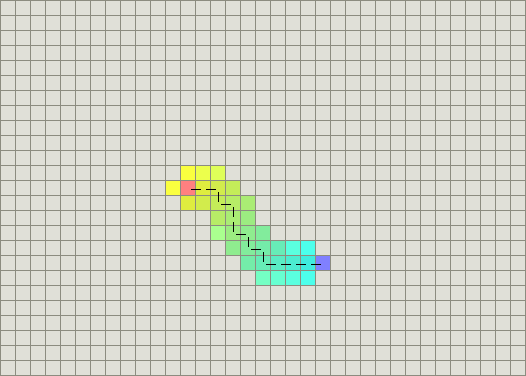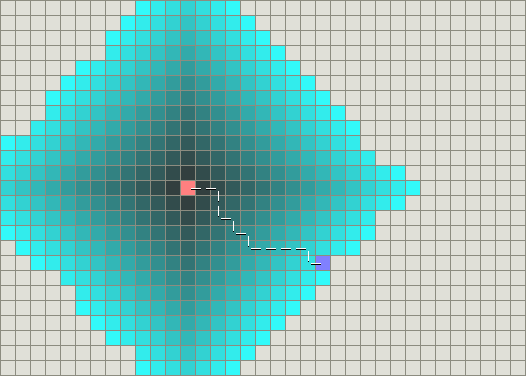
PostgreSQL is a powerful, open source object-relational database system. It has more than 15 years of active development and a proven architecture that has earned it a strong reputation for reliability, data integrity, and correctness. It runs on all major operating systems, including Linux, UNIX (AIX, BSD, HP-UX, SGI IRIX, Mac OS X, Solaris, Tru64), and Windows. It is fully ACID compliant, has full support for foreign keys, joins, views, triggers, and stored procedures (in multiple languages). It includes most SQL92 and SQL99 data types, including INTEGER, NUMERIC, BOOLEAN, CHAR, VARCHAR, DATE, INTERVAL, and TIMESTAMP. It also supports storage of binary large objects, including pictures, sounds, or video. It has native programming interfaces for C/C++, Java, .Net, Perl, Python, Ruby, Tcl, ODBC, among others, and
exceptional documentation.
An enterprise class database, PostgreSQL boasts sophisticated features such as Multi-Version Concurrency Control (MVCC), point in time recovery, tablespaces, asynchronous replication, nested transactions (savepoints), online/hot backups, a sophisticated query planner/optimizer, and write ahead logging for fault tolerance. It supports international character sets, multibyte character encodings, Unicode, and it is locale-aware for sorting, case-sensitivity, and formatting. It is highly scalable both in the sheer quantity of data it can manage and in the number of concurrent users it can accommodate. There are active PostgreSQL systems in production environments that manage in excess of 4 terabytes of data. Some general PostgreSQL limits are included in the table below.
PostgreSQL has won praise from its users and industry recognition, including the Linux New Media Award for Best Database System and five time winner of the The Linux Journal Editors' Choice Award for best DBMS.
Featureful and Standards Compliant
PostgreSQL prides itself in standards compliance. Its SQL implementation strongly conforms to the ANSI-SQL 92/99 standards. It has full support for subqueries (including subselects in the FROM clause), read-committed and serializable transaction isolation levels. And while PostgreSQL has a fully relational system catalog which itself supports multiple schemas per database, its catalog is also accessible through the Information Schema as defined in the SQL standard.
Data integrity features include (compound) primary keys, foreign keys with restricting and cascading updates/deletes, check constraints, unique constraints, and not null constraints.
It also has a host of extensions and advanced features. Among the conveniences are auto-increment columns through sequences, and LIMIT/OFFSET allowing the return of partial result sets. PostgreSQL supports compound, unique, partial, and functional indexes which can use any of its B-tree, R-tree, hash, or GiST storage methods.
GiST (Generalized Search Tree) indexing is an advanced system which brings together a wide array of different sorting and searching algorithms including B-tree, B+-tree, R-tree, partial sum trees, ranked B+-trees and many others. It also provides an interface which allows both the creation of custom data types as well as extensible query methods with which to search them. Thus, GiST offers the flexibility to specify what you store, how you store it, and the ability to define new ways to search through it --- ways that far exceed those offered by standard B-tree, R-tree and other generalized search algorithms.
GiST serves as a foundation for many public projects that use PostgreSQL such as OpenFTS and PostGIS. OpenFTS (Open Source Full Text Search engine) provides online indexing of data and relevance ranking for database searching. PostGIS is a project which adds support for geographic objects in PostgreSQL, allowing it to be used as a spatial database for geographic information systems (GIS), much like ESRI's SDE or Oracle's Spatial extension.
Other advanced features include table inheritance, a rules systems, and database events. Table inheritance puts an object oriented slant on table creation, allowing database designers to derive new tables from other tables, treating them as base classes. Even better, PostgreSQL supports both single and multiple inheritance in this manner.
The rules system, also called the query rewrite system, allows the database designer to create rules which identify specific operations for a given table or view, and dynamically transform them into alternate operations when they are processed.
The events system is an interprocess communication system in which messages and events can be transmitted between clients using the LISTEN and NOTIFY commands, allowing both simple peer to peer communication and advanced coordination on database events. Since notifications can be issued from triggers and stored procedures, PostgreSQL clients can monitor database events such as table updates, inserts, or deletes as they happen.
Highly Customizable
PostgreSQL runs stored procedures in more than a dozen programming languages, including Java, Perl, Python, Ruby, Tcl, C/C++, and its own PL/pgSQL, which is similar to Oracle's PL/SQL. Included with its standard function library are hundreds of built-in functions that range from basic math and string operations to cryptography and Oracle compatibility. Triggers and stored procedures can be written in C and loaded into the database as a library, allowing great flexibility in extending its capabilities. Similarly, PostgreSQL includes a framework that allows developers to define and create their own custom data types along with supporting functions and operators that define their behavior. As a result, a host of advanced data types have been created that range from geometric and spatial primitives to network addresses to even ISBN/ISSN (International Standard Book Number/International Standard Serial Number) data types, all of which can be optionally added to the system.
Just as there are many procedure languages supported by PostgreSQL, there are also many library interfaces as well, allowing various languages both compiled and interpreted to interface with PostgreSQL. There are interfaces for Java (JDBC), ODBC, Perl, Python, Ruby, C, C++, PHP, Lisp, Scheme, and Qt just to name a few.
Best of all, PostgreSQL's source code is available under the most liberal open source license: the BSD license. This license gives you the freedom to use, modify and distribute PostgreSQL in any form you like, open or closed source. Any modifications, enhancements, or changes you make are yours to do with as you please. As such, PostgreSQL is not only a powerful database system capable of running the enterprise, it is a development platform upon which to develop in-house, web, or commercial software products that require a capable RDBMS.














